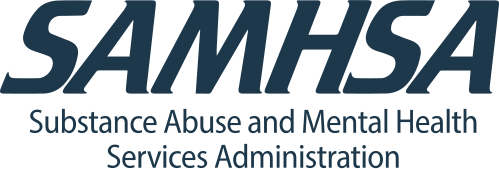Cocaine is a highly addictive drug that can heighten activity in the body, including heart rate, blood pressure, alertness, and energy. The most commonly used form of the drug is a white powder which is found in the leaves of the Erythroxylon Coca plant and has been used in South America for hundreds of years. Knowing the signs, symptoms, and serious side effects of cocaine use, misuse and addiction can help you or a loved one understand what’s at risk and when to seek professional help. Read on to learn the facts about cocaine addiction and detox.

What to Know About Cocaine
It was first introduced in the United States in the 1880s as a surgical anesthetic. In the early 1900s, cocaine was the active ingredient in many of the tonics and elixirs that were marketed at the time to treat a variety of conditions and illnesses before its side effects and addictive properties were fully understood. It was classified as a Schedule II drug in 1970. In the United States, recreational cocaine use is illegal. Street dealers often mix it with things like cornstarch, talcum powder, or flour to increase profits. They may also mix it with other drugs such as the stimulant amphetamine, or synthetic opioids, including fentanyl. Adding synthetic opioids to cocaine is especially risky when people using cocaine don’t realize it contains this dangerous additive. Increasing numbers of overdose deaths and cocaine addiction among cocaine users might be related to this tampered cocaine.
Cocaine as a Stimulant
Stimulants like cocaine can disrupt how the brain’s dopamine system works, reducing a person’s ability to feel pleasure from normal, everyday activities. It’s difficult to understand how the derivative of a seemingly harmless plant can ruin the lives of countless human beings throughout the United States and Worldwide. In order to understand the danger, one needs to realize how easy it is to develop a cocaine addiction. Cocaine addiction alters the state of a user’s brain. Let me repeat, cocaine will cause long-term changes to brain chemistry. What does this mean? Users of this drug will experience a chemical addiction (dependency) within his/her brain, making it nearly impossible to discontinue the use of this drug. In fact, cravings for the drug will be so strong, that you’ll need a stronger dose each time you use it. Couple this with the fact the “high” a user will experience will only last between 5-30 minutes (depending on the form in which the drug was taken), it’s no surprise that countless victims become addicted to cocaine before he/she can even acknowledge that he/she is suffering from a disease.
Effects of Cocaine Addiction
Currently, stimulants like cocaine and other amphetamines are the second most abused drugs in the U.S., with marijuana holding the top spot. But don’t let its popularity fool you. Cocaine can have serious effects on a person’s body. As with other drugs, repeated use of cocaine can cause long-term changes in the brain’s reward circuit and other brain systems, which may lead to addiction. The reward circuit eventually adapts to the extra dopamine caused by the drug, becoming steadily less sensitive to it. As a result, people take stronger and more frequent doses to feel the same high they did initially and to obtain relief from withdrawal.
Cocaine is a serotonin/norepinephrine/dopamine reuptake inhibitor, which means the substance helps to release “feel-good” chemicals in the brain. Over time, the brain receptors may become desensitized to the manufactured rush of dopamine that cocaine causes. According to the National Institute on Drug Abuse, “As with other drugs, repeated use of cocaine can cause long-term changes in the brain’s reward circuit and other brain systems, which may lead to addiction. The reward circuit eventually adapts to the extra dopamine caused by the drug, becoming steadily less sensitive to it. As a result, people take stronger and more frequent doses to feel the same high they did initially and to obtain relief from withdrawal.”

Can a person overdose on cocaine?
Yes, a person can overdose on cocaine. An overdose occurs when a person uses enough of a drug to produce serious adverse effects, life-threatening symptoms, or death. An overdose can be intentional or unintentional.
Death from overdose can occur on the first use of cocaine or unexpectedly thereafter. Many people who use cocaine also drink alcohol at the same time, which is particularly risky and can lead to overdose. Others mix cocaine with heroin, another dangerous—and deadly—combination.
Some of the most frequent and severe health consequences of overdose are irregular heart rhythm, heart attacks, seizures, and strokes. Other symptoms of cocaine overdose include difficulty breathing, high blood pressure, high body temperature, hallucinations, and extreme agitation or anxiety.

Cocaine Withdrawal Timeline
While there are no FDA-approved medications to help reduce the effects of cocaine withdrawal, there are self-care strategies you can use to find some relief. The first step is to detox from the drug, a process that can vary depending on how much and how long you have been taking the drug. Compared to some other types of drugs, the cocaine detox process is relatively short, but it can often be intense.
The most important thing to do during this time is to get support from people who understand what you are going through, whether that includes loved ones or medical professionals. Cocaine addiction is best treated when you are not alone.
As you are going through the detox and withdrawal process, focus on taking care of yourself physically and mentally. Healthy habits like getting regular exercise, eating nutritious food, and getting enough sleep can be a good jump-start toward feeling better.
| First 1-3 hours | Symptoms emerge as soon as usage stops. Users start to feel irritable, anxious, exhausted and have an increased appetite. Cocaine cravings actually decrease during this period. |
| Week 1 | Intense cocaine cravings arise. Users feel exhausted but have trouble falling asleep. Vivid, unpleasant dreams are common, as well as depressive mood swings. |
| Weeks 2-4 | Depression and strong cocaine cravings continue. Recovering users might find it hard to concentrate or stay on an “even keel” emotionally. Irritability and agitation are also common. |
| Weeks 5-10 | The mind and body begin to heal, and withdrawal symptoms diminish. Cocaine cravings can still crop up during this period. General anxiety and uneasiness sometimes return as well. |
Handling Cocaine Addiction with Daylight Recovery Center
Treatment for cocaine addiction begins with acknowledgment. Cocaine addiction is a disease, not a sign of weakness. In fact, it’s a sign of strength to acknowledge a flaw and it takes strength to commit to making a positive change. Daylight Recovery Center understands how difficult it is to ask for help, and we welcome those asking for help with open arms.
We do provide medications that keep our patients comfortable during the detox process should he/she experience withdrawal symptoms. Our team will be by your side during the entire process, providing you with an industry-renowned medically managed detox method that is both safe and effective. After completing the detox process, Daylight Recovery Center provides each patient with the tools, training, and rehabilitation that is needed to make a full recovery of the mind, body, and soul.
The National Treatment Agency for Substance Misuse (NTA) says that 70 percent of people who go into treatment for powder cocaine problems either stop completely or significantly reduce their consumption within 6 months. With statistics like that in your favor, choose Daylight Recovery and regain power over your life today! (888) 708-2602
Points to Remember from the National Institute on Drug Abuse
- Cocaine is a powerfully addictive stimulant drug made from the leaves of the coca plant native to South America.
- Street dealers often mix it with things like cornstarch, talcum powder, or flour to increase profits.
- They may also mix it with other drugs such as the stimulant amphetamine or the synthetic opioid fentanyl.
- People snort cocaine powder through the nose or rub it into their gums. Others dissolve the powder and inject it into the bloodstream, or inject a combination of cocaine and heroin, called a Speedball. Another popular method of use is to smoke Crack cocaine.
- Cocaine addiction increases levels of the natural chemical messenger dopamine in brain circuits related to the control of movement and reward.
- A person can overdose on cocaine, which can lead to death.
- Behavioral therapy may be used to treat cocaine addiction.
- While there are no FDA-approved medications for the treatment of cocaine use disorder, NIDA supports a robust medication development pipeline in this area for cocaine addiction.



